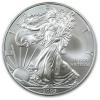| Online: | |
| Visits: | |
| Stories: |

| Story Views | |
| Now: | |
| Last Hour: | |
| Last 24 Hours: | |
| Total: | |
How The Fed Just Launched The Next Bear Market: BofA’s Unexpected Conclusion In 8 Charts
While the afterglow of exuberance remains in stocks, BofAML's Michael Hartnett is less than impressed by what comes next…
As Fed hikes rates for the first time in 3,460 days, officially ending the era of extreme, abnormal monetary policy in the form of QE and zero rates, what do we see?
Risk assets were very oversold going into the Fed hike…they now bounce.
But the Fed hike follows significant tightening of liquidity; negative blowback is more and more visible, e.g. credit crunch causing less stock buybacks.
And global banks being at all-time relative lows indicate Fed tightening into deflationary expansion, as does the narrow breadth of economic growth, wealth and asset price gains.
Rising rates and falling profits are not a good combination for asset prices, so we will turn sellers of risk in early 2016.
The FOMC In 8 Charts
The Fed hiked 25bps, thus officially ending an unprecedented era of ZIRP and QE. Some quick thoughts:
The BofAML Global Breadth Indicator is on the verge of a tactical “buy” signal (Chart 2). Combined with high cash levels (5.2% in the Dec FMS = “buy signal”) and the largest UW of US stocks since Jan'08, this suggests the final “pain trade” of a painful year is a squeeze higher in the most oversold risky assets.
The rate of growth of global liquidity (CB balance sheets + global FX reserves) is now shrinking (Chart 3). In the past 15 months, liquidity has unambiguously tightened as Fed QE3 ended, US real rates rose (see USGGT05Y INDEX), and China/OPEC FX reserves fell. Excess liquidity caused excess returns. But returns have been low and volatile in 2015 (cash is outperforming stocks and bonds for the 1st time since 1990) and we think the Fed hike will simply extend this backdrop…at least until stronger US data signals Quantitative Success.
Credit and commodities were two big “QE winners”. The Fed hike coincides with a marked deterioration in the credit cycle, as evidenced by the widening of credit spreads. Rising rates and spreads means lower debt issuance, which in turn means less money for stock buybacks. Last week's S&P downgrade of Yum was driven by its announcement of a stock buyback program likely to be funded by even more debt. If companies cannot now issue debt to fund buybacks, this marks an important turning point for the stock market. Note wider credit spreads have gone hand in hand with underperformance of the stock buyback theme in recent months (Chart 4). We would thus take profits in any short-term bounce in stocks.
In every cycle, higher rates punish financial excess. The commodity crash of 2015 was driven by the combo of tighter liquidity (thus strong $) and excess supply (driven by tech disruption and the zero rate policies of recent years). The widening of Saudi Arabia's CDS (Chart 5) indicates the crash and its secondary impact are still being felt.
The end of QE3 in the autumn of 2014 sparked a bull market in QE “losers” such as the US dollar, volatility and cash, and a bear markets in QE “winners”, such as EM, commodities & credit. The bear market in EM, commodities, credit would be irrelevant were the Fed hiking into a strong economy and a strong EPS trend. But the Fed is hiking at the same time as global bank stocks are at all-time relative lows versus global stocks (Chart 6). The absence of a bull market in bank stocks and a bear market in government bonds indicates the Fed is hiking into a very “deflationary expansion”, hints at Quantitative Failure, and puts great onus on corporate earnings to support asset prices in 2016.
Unfortunately US corporate profits are currently falling 4.7% YoY and this has historically been associated with negative US payroll growth (Chart 7).
And while the overall stock market looks healthy, it betrays a fragile, deflationary bull market with increasingly narrow leadership (Chart 8).
The Fed's hike still leaves US and global interest rates close to “depression era” levels (Chart 9) and history is littered with examples of central banks struggling to escape from zero rates (Fed 1937, BoJ 1994 & 2000). We will turn sellers of risk in early '16 because rising rates and falling profits are ultimately not a good combination for asset prices.

Source: http://silveristhenew.com/2015/12/17/how-the-fed-just-launched-the-next-bear-market-bofas-unexpected-conclusion-in-8-charts/











